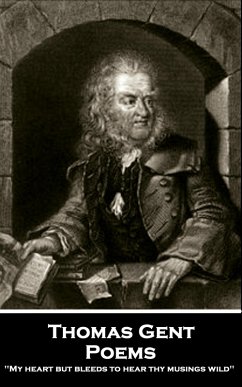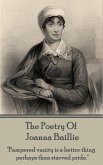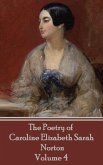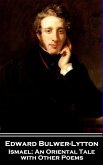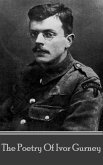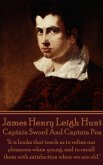Thomas Gent was born in Ireland on 4th May 1693 and baptised as a Presbyterian.
In 1707 he was given an apprenticeship with Stephen Powell, a printer in Dublin. It turned out to be an unhappy time for Gent and in 1710 he took his leave and stowed away on a ship bound for England.
In London he obtained another printing apprenticeship under Edward Midwinter. After completing this in 1713, he worked briefly for a Mrs Bradford, and then a printer named Mears. Unsatisfied with his progress he turned to laboring for subsistence.
A few months later he obtained a post with John White, the King's printer for York. He also met here his future wife; Alice Guy.
By 1717 he was back in London and was admitted to the Company of Stationers, and also became a freeman of London.
He briefly returned to Ireland, visiting his parents, and then returned to London, taking up employment under a Roman Catholic named Clifton, and met Atterbury, Bishop of Rochester, for whom he then printed a defence of an imprisoned Clergyman.
Gent was requested by Midwinter on a number of occasions to return to work with him, and he eventually left the troublesome Clifton to rejoin him.
It was also now that Gent was briefly arrested, on suspicion of printing treasonable works, and placed in prison for five days, but was then released without charge.
His aim now was to establish himself as a printer in his own right, so that he might have the means to marry Alice. However, she had married Charles Bourne, grandson of John White and inheritor of his printshop, in 1721.
In 1724 Alice was widowed, and Gent travelled to York to once more attempt marriage. He was successful and they married in York Minster in December 1724, and, by this marriage, he also obtained the print business in York. Gent now became the publisher of Yorkshire's only newspaper, the Original York Courant, or Weekly Journal, previously the York Mercury.
Their union produced a child within the year but sadly the boy, Charles, died at a very young age in 1726.
John White Jnr, printer of Newcastle, the son of John White, who had failed to obtain the York Press for himself set up a rival business in York. This venal competition prompted Gent to begin writing his own works, and he published a history of York in 1730, followed by another on Ripon in 1733, and then one on Hull in 1735. Gent's paper ceased publication in 1728, and White's The York Courant became the predominant local paper.
In 1735 Gent began publication of a journal 'Miscellanea Curiosa', concerned with mathematical and other problems; the publication was not a success.
In 1741 Gent published a history of England, and with it a history of Rome in the second volume.
From the 1740s Gent's business went into decline, due to competition from John White Jnr., and other printers who had also set up in York. He lost the lease on his house and to his print premises in Stonegate in 1742. He and Alice then moved to a house in Petergate, where he continued to publish but with reduced output. From here he published several works covering religious topics, in poem form, the first being 'The Holy Life and Death of St. Winefred'.
On 1st April 1761 his wife, Alice died.
Gent's own circumstances were much reduced in the last decades of his life; he struggling with illness, and poverty, and had to rely on the charity of friends.
Thomas Gent died on 19th May 1778. He was buried at St. Michael-le-Belfry in York.
In 1707 he was given an apprenticeship with Stephen Powell, a printer in Dublin. It turned out to be an unhappy time for Gent and in 1710 he took his leave and stowed away on a ship bound for England.
In London he obtained another printing apprenticeship under Edward Midwinter. After completing this in 1713, he worked briefly for a Mrs Bradford, and then a printer named Mears. Unsatisfied with his progress he turned to laboring for subsistence.
A few months later he obtained a post with John White, the King's printer for York. He also met here his future wife; Alice Guy.
By 1717 he was back in London and was admitted to the Company of Stationers, and also became a freeman of London.
He briefly returned to Ireland, visiting his parents, and then returned to London, taking up employment under a Roman Catholic named Clifton, and met Atterbury, Bishop of Rochester, for whom he then printed a defence of an imprisoned Clergyman.
Gent was requested by Midwinter on a number of occasions to return to work with him, and he eventually left the troublesome Clifton to rejoin him.
It was also now that Gent was briefly arrested, on suspicion of printing treasonable works, and placed in prison for five days, but was then released without charge.
His aim now was to establish himself as a printer in his own right, so that he might have the means to marry Alice. However, she had married Charles Bourne, grandson of John White and inheritor of his printshop, in 1721.
In 1724 Alice was widowed, and Gent travelled to York to once more attempt marriage. He was successful and they married in York Minster in December 1724, and, by this marriage, he also obtained the print business in York. Gent now became the publisher of Yorkshire's only newspaper, the Original York Courant, or Weekly Journal, previously the York Mercury.
Their union produced a child within the year but sadly the boy, Charles, died at a very young age in 1726.
John White Jnr, printer of Newcastle, the son of John White, who had failed to obtain the York Press for himself set up a rival business in York. This venal competition prompted Gent to begin writing his own works, and he published a history of York in 1730, followed by another on Ripon in 1733, and then one on Hull in 1735. Gent's paper ceased publication in 1728, and White's The York Courant became the predominant local paper.
In 1735 Gent began publication of a journal 'Miscellanea Curiosa', concerned with mathematical and other problems; the publication was not a success.
In 1741 Gent published a history of England, and with it a history of Rome in the second volume.
From the 1740s Gent's business went into decline, due to competition from John White Jnr., and other printers who had also set up in York. He lost the lease on his house and to his print premises in Stonegate in 1742. He and Alice then moved to a house in Petergate, where he continued to publish but with reduced output. From here he published several works covering religious topics, in poem form, the first being 'The Holy Life and Death of St. Winefred'.
On 1st April 1761 his wife, Alice died.
Gent's own circumstances were much reduced in the last decades of his life; he struggling with illness, and poverty, and had to rely on the charity of friends.
Thomas Gent died on 19th May 1778. He was buried at St. Michael-le-Belfry in York.
Dieser Download kann aus rechtlichen Gründen nur mit Rechnungsadresse in D ausgeliefert werden.

